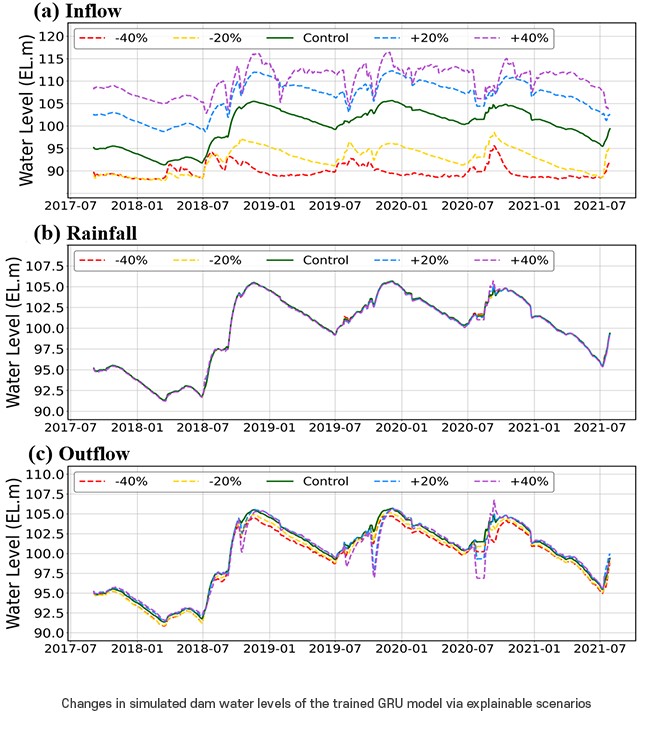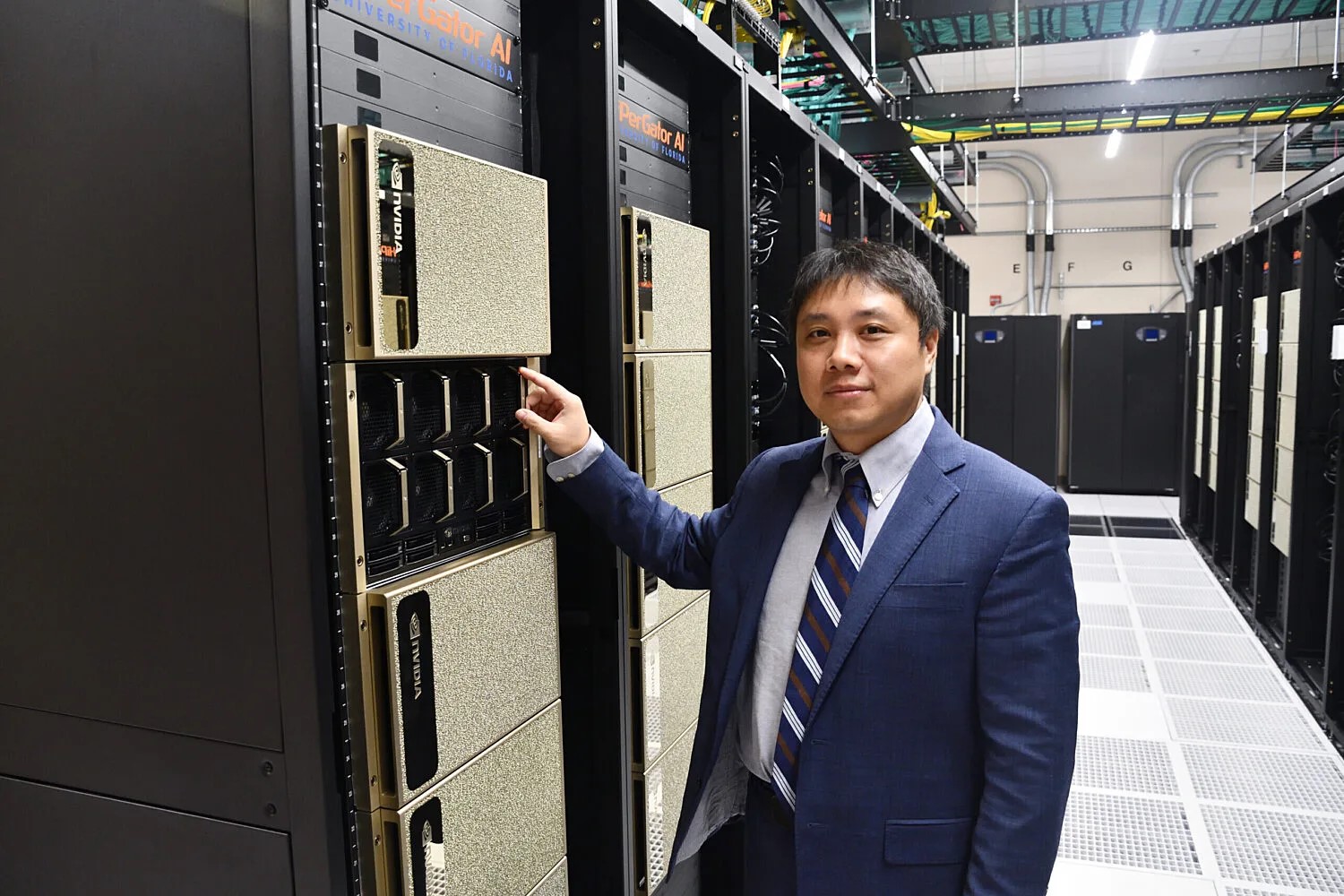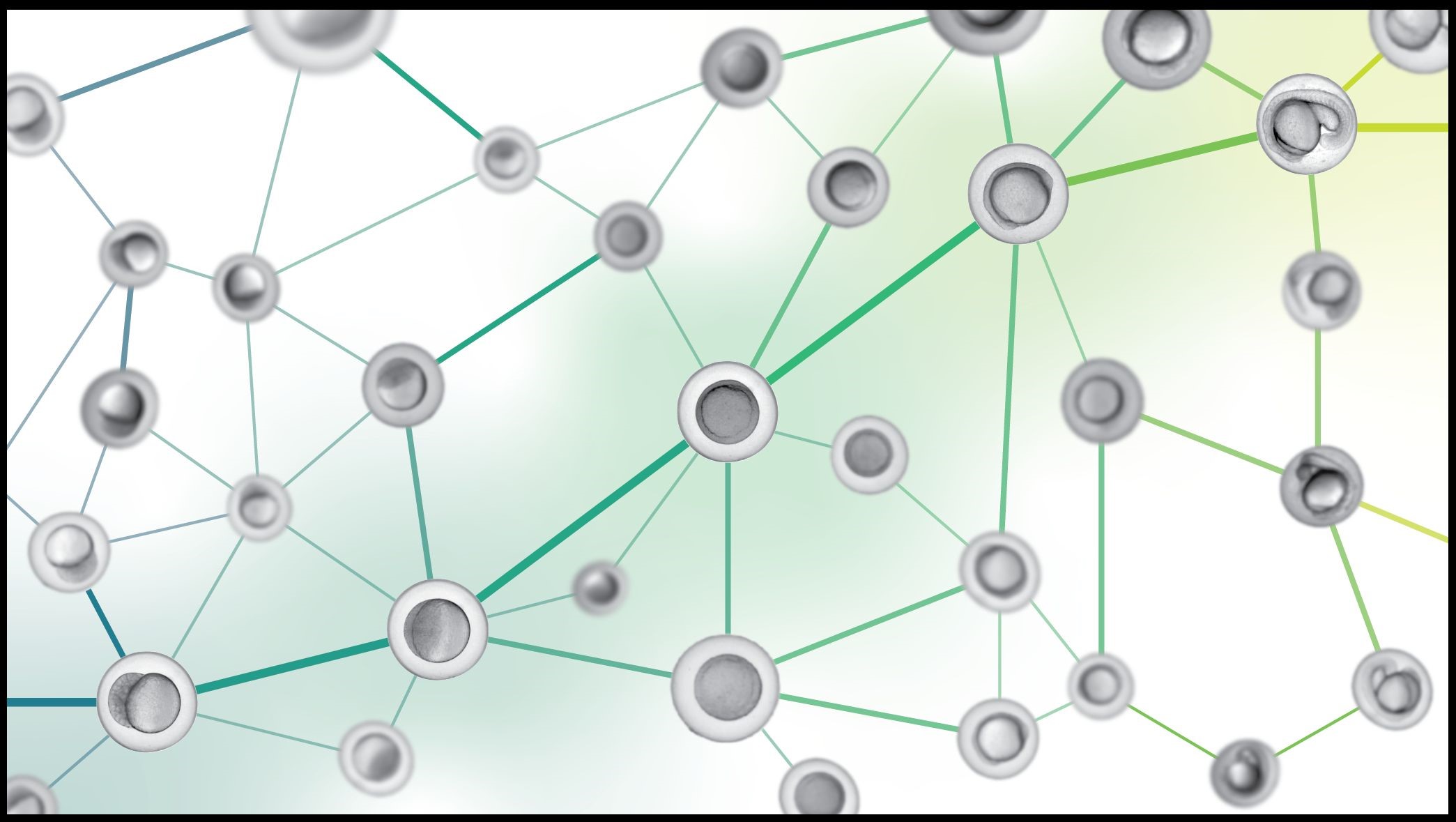How AI Could Prevent Dam Disasters in Korea
In August 2020, Korea faced a devastating dam overflow near the Seomjin River, resulting in damages exceeding USD 76 million. Following this incident, a research team led by Professor Jonghun Kam and PhD candidate Eunmi Lee from Pohang University of Science and Technology (POSTECH) embarked on a groundbreaking study utilizing deep learning techniques to analyze dam operation patterns. Their recent findings, published in the Journal of Hydrology, shed light on the potential of artificial intelligence (AI) in predictive dam management.

Figure 1. Changes in simulated dam water levels of the trained GRU model via explainable scenarios. (Credit: POSTECH)
The Challenge
Figure 1 shows the changes in simulated dam water levels of the trained GRU model via explainable scenarios. Korea heavily relies on dams for water management, especially during the summer precipitation peak. However, the increasing impact of the global climate crisis has introduced unforeseen challenges such as typhoons and droughts, complicating traditional dam operations. In response, the research team aimed to surpass conventional models by harnessing the power of AI trained on extensive big data.
The AI Model
The team focused on crafting an AI model that not only predicts dam operational patterns within the Seomjin River basin but also understands the decision-making processes of the model itself. Using the Gated Recurrent Unit (GRU) model, a deep learning algorithm, the team trained it on data spanning from 2002 to 2021 from dams along the Seomjin River. Input variables included precipitation, inflow, and outflow data, while hourly dam levels served as outputs. The model demonstrated remarkable accuracy, boasting an efficiency index exceeding 0.9.
Scenario Analysis
To enhance the model's transparency, the team devised explainable scenarios by manipulating input variables. Changes in precipitation had a negligible impact, but variations in inflow significantly influenced dam water levels. Importantly, identical changes in outflow yielded different water levels at distinct dams, showcasing the model's ability to learn the unique operational nuances of each dam.
The Significance
Professor Jonghun Kam emphasized that the study goes beyond predicting dam operation patterns; it aims to scrutinize and enhance their effectiveness using AI models. The methodology introduced by the team provides insights into the decision-making process of AI-based models, contributing to a deeper understanding of dam operations and ultimately enhancing their efficiency in the future.
This groundbreaking research, sponsored by the Mid-career Researcher Program of the National Research Foundation of Korea, highlights the potential of AI in revolutionizing dam management. By combining predictive capabilities with an understanding of decision-making processes, the study opens new avenues for preventing dam disasters and ensuring the resilience of critical infrastructure in the face of unpredictable climate challenges.
Source: Pohang University of Science & Technology (POSTECH)
Cite this article:
Hana M (2023), How AI Could Prevent Dam Disasters in Korea, AnaTechMaz, pp. 335















